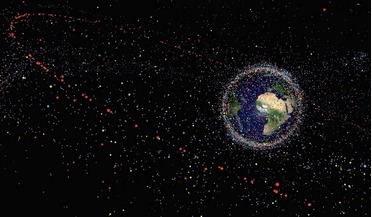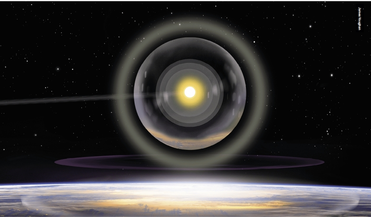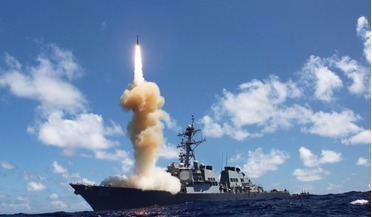 July 2014
Beware the situation: how JSpOC tracks space debris
July 2014
Beware the situation: how JSpOC tracks space debris
... Force Base, California, actively tracks all objects of ‘softball size’ (10cm) or larger in orbit, using the US Space Surveillance Network (SSN) as our primary detection suite of sensors. The SSN is comprised of ground radar and optical systems and...
 April 2021
Space wars - how they start and how to end them
April 2021
Space wars - how they start and how to end them
... of a satellite can, without optically absorptive materials, achieve brightness signatures down to 18th magnitude. The US space surveillance network, the largest in the world, routinely ‘loses’ satellites all of the time, as the figure on page...
 April 2017
Mega-challenges for mega-constellations
April 2017
Mega-challenges for mega-constellations
... has been growing. The number of on-orbit objects tracked by the US Strategic Command (operators of the US Space Surveillance Network) shows faster growth compared to the number of operational satellites on-orbit. Evolution of the number of objects...
 September 2020
Tackling space debris - a global priority
September 2020
Tackling space debris - a global priority
... Command as a crew commander, orbital analyst and manager of the Space Surveillance Network. This was followed by seven years with the Canadian Surveillance of Space Project, from definition to completion of the Department of National Defence’s first...
 February 2017
Protecting our space interests
February 2017
Protecting our space interests
... at a time. Between 1957 and the end of 2015 there were 5,165 successful space launches. About 22,000 objects are being tracked by the US Space Surveillance Network and a high proportion (17,255) have been catalogued, that is, they have been...
 July 2019
Aggression in outer space – time for action
July 2019
Aggression in outer space – time for action
... (white) as a comparison. The US Air Force makes available a lot of information resulting from its space surveillance network, but that information does not include its own and allies’ military spacecraft. A few civilian governmental ...